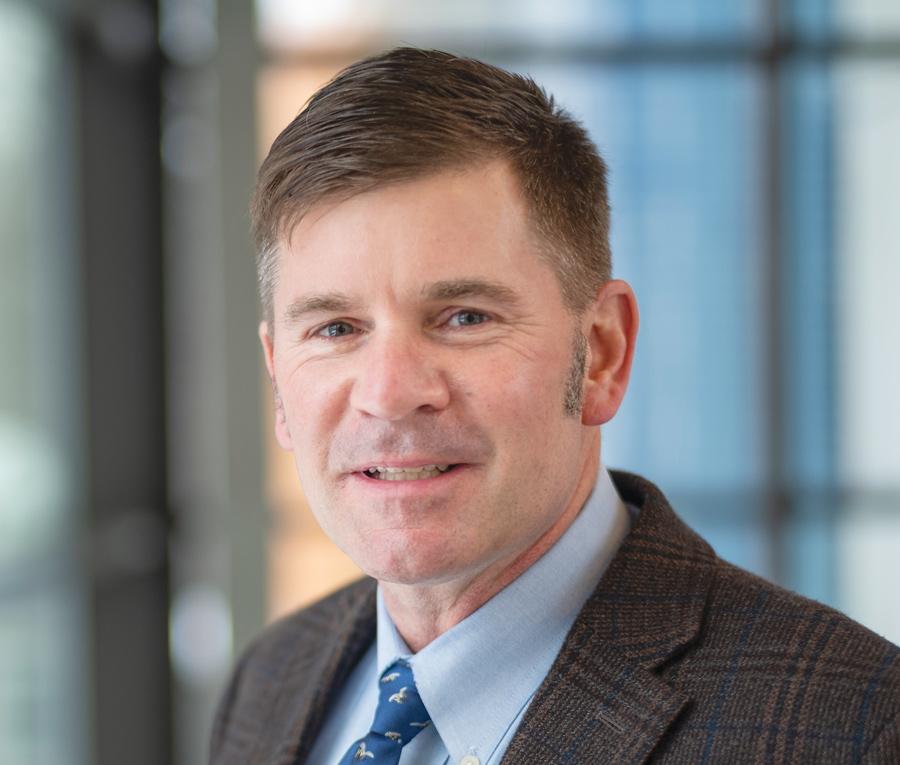
A Bold Step Forward
We don’t often think about the campus mechanical system, but you need to know everything about it. What might surprise people about the steam system?
Though it is simple and reliable technology, it’s very inefficient. We combust either natural gas or heating oil (almost exclusively gas) to create high-pressure steam. That happens inside the boiler plant that is next to the smokestack. The steam pressure forces the steam throughout the campus through an underground distribution system. Buildings receive the steam, which, in most cases, is used to heat water through a heat exchanger that circulates throughout the buildings to heat them or to create hot water for domestic uses. As the steam gives its energy to create the hot water, it condenses back to water itself, and that condensate flows back to the central plant through underground piping and is heated again to create more steam. A lot of energy is required simply to keep the distribution network pressurized year-round. A full third of the energy used to produce the steam is not used by our buildings, but is consumed to either keep the system pressurized or is lost in leaky distribution piping.
Have you ever found tools in the current system that you were not familiar with or that are no longer used in the industry?
Honestly, no. What surprised me is some of our infrastructure is more than a century old and still in operation. That’s a testament to generations of maintenance staff members who’ve been good stewards of the infrastructure. Because of its age, a lot of investment would be required to renew the steam infrastructure. When we performed a life-cycle cost analysis, it’s no more expensive to replace the steam system with combustion-free, low-temperature hot water than it is to keep it going.
What exactly does a geo-exchange plant do?
The geo-exchange plant is the heart of the new low-temperature hot-water system. It will house all of the pumps required to move heating and cooling water throughout the campus and to and from the well field. When built out, the plant will house four heat-recovery chillers. In the summer, the chillers will extract heat that is taken from buildings to cool them and send the heat to the well field, where it will be stored for winter extraction. Currently, the heat extracted from buildings for summer cooling is exhausted into the air through cooling towers, and then we combust fossil fuels to create needed heat for winter comfort or for summer uses in other buildings. In the winter, the heat-recovery chillers will extract the stored heat from the well field and use it to deliver hot water to the campus buildings for heating and domestic hot water.
Swarthmore is one of only a few higher education institutions in the U.S. to take on a renewable-energy plan of this scale. Why is it important for Swarthmore to lead?
A few institutions have already converted from high-pressure steam energy. This method is rooted in proven technology: renewable energy as a means of power, water as a means of thermal-energy conveyance, and the earth as a means of heat storage. It’s a bold step to embrace a wholesale infrastructure replacement, but it’s also a recognition from our institutional leadership and Board of Managers that doubling down to rehab our legacy steam infrastructure is not how the College should position itself for energy efficiency and a carbon-free future. Beyond the importance to the College to fulfill this plan for our own interests is for us to demonstrate to other regional institutions that it is achievable; that with thoughtful analysis, careful planning, and excellent engineering, colleges and universities can become combustion-free, or nearly so.